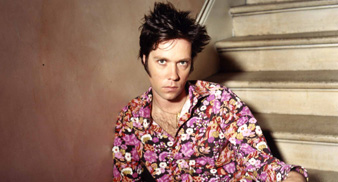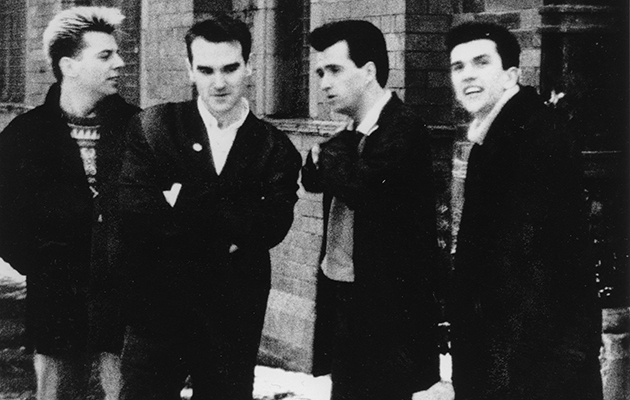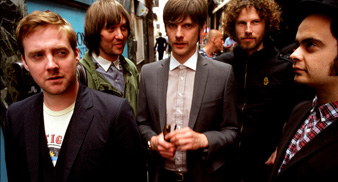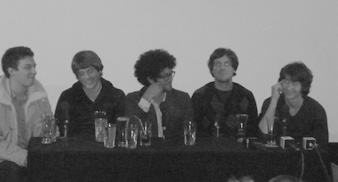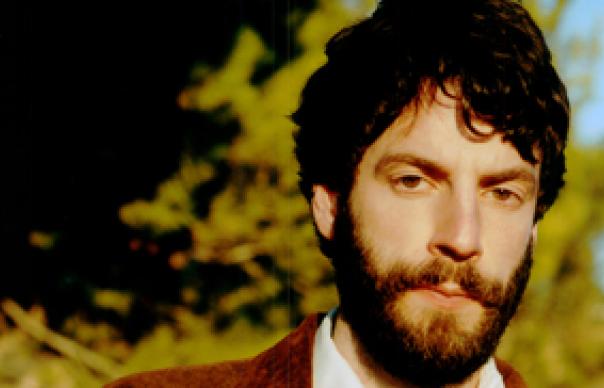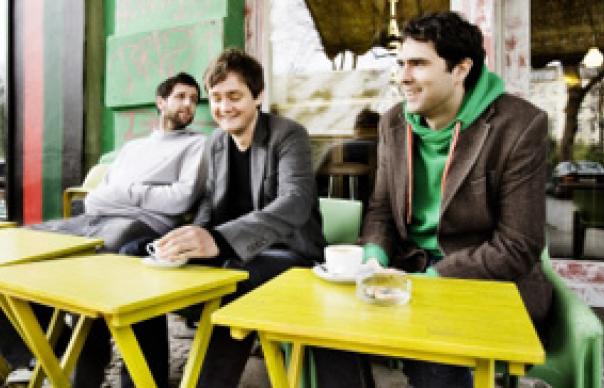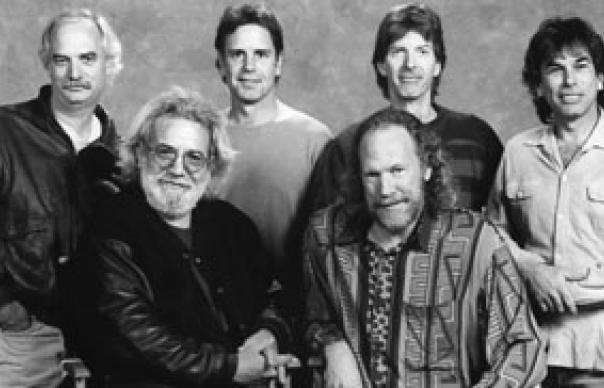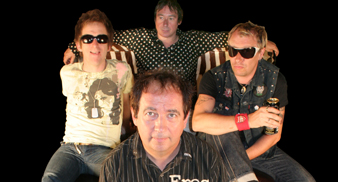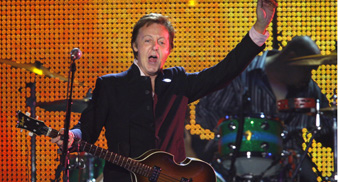BOB DYLAN SPECIAL: The Complete Tell Tale Signs
In this month’s issue of Uncut, we celebrate the release of Tell Tale Signs, the Bootleg Series Vol 8, Bob Dylan’s astonishing 2 and 3CD collection of unreleased material from 1989-2006.
We spoke to the musicians, producers and crew who worked with him during this period. And now, here’s your chance to read the full, unedited transcripts of those interviews.
Today, we present Don Was, while Daniel Lanois, Jim Keltner and others will follow in a further ten parts in the coming month. .
You can read previous transcripts by clicking on the side panel (right).
Next one up tomorrow (October 10)!
Don Was
Along with fellow Was (Not Was) mainstay, David, the man born Don Fagenson was invited by Dylan to produce 1990’s routinely underrated Under The Red Sky. “The precursor to Modern Times,” he says today…
Was (Not Was) was on this godawful Club MTV tour, playing to arenas full of 14 year olds and opening for Milli Vanilli, Paula Abdul and Tone Loc. Being twenty years older than everyone else on the tour AND the only act performing live, we were dying on stage every night. Out of nowhere, we got an offer to score and appear in a movie called The Freshman which starred Marlon Brando, Matthew Broderick and a wonderful actor named Bruno Kirby. We hired two curly haired ringers to cover for us onstage and jumped ship for Toronto where the movie was being filmed. The first order of business was to cut a version of “Maggie’s Farm” that was to be performed in the film by a classic American TV presenter named Burt Parks – possibly the least likely person ever to cover a Bob Dylan song. We made the record on a Tuesday and then spent the next five days lip-synching to the track in front of the cameras – David and I performing as Burt’s band while Brando acted out the film’s climactic scene in front of the bandstand. Well, we found out that Bob was gonna be performing live in Toronto that week so I called a mutual friend and scored some tickets. David, Bruno, Matthew, Matthew’s then-girlfriend, Helen Hunt, and I piled in a car and ran over to what’s now called the Molson Amphitheater. After the show, David and I were ushered into a room to meet our hero. We brought him the cassette copy of Burt Parks singing “Maggie’s Farm” and a small token of our esteem to keep him entertained on the bus: a VHS copy of Garden Of The Fitzi Contini’s that we’d ‘permanently rented’ from a local video shop and some microwave popcorn. We had a good laugh together and the vibe was nice. A few months later, Bob called and asked if I’d be interested in producing a new version of a song called “God Knows”. David and I pulled out of our gig scoring The Freshman – which was a blessing for everyone because we were definitely in way over our heads – and booked a day at the Record Plant recording studio for our first session with Bob Dylan.
I had no particular reservations about working with Dylan. Well, it’s not hyperbolic for me to say that, since 1966, my highest aspiration in life was to play bass and record with Bob Dylan, so no, there was absolutely no trepidation about accepting his invitation. That said, once in the studio, I wasn’t totally able to toss iconography and myth to the wind. Bob wasn’t the problem – he made a real effort to put us at ease which is something I’ve always appreciated and admired about him. He was humble and very funny. In addition to being one of the most creative folks ever to come down the pike, he’s a good man, y’know? I’m sure that there were times when we offered suggestions that were based more on preconceptions about the legend than what was right for the moment, but that doesn’t mean that Bob actually listened to those suggestions. With a little more experience, I probably could have been a better producer for Bob but who knows? Maybe every album, like every blade of grass, is already numbered by the master’s hand. Know what I’m saying? Under The Red Sky was probably gonna turn out the way it did whether it was produced by The Was Brothers or a couple of astronauts!
Under The Red Sky didn’t get the greatest reviews, but it’s one of the very few records I’ve been involved with that I also listen to for personal enjoyment. That’s all I can go by. You should bear in mind that I also listen to Archie Shepp, the Stooges and Andre Williams for enjoyment but that doesn’t alter the fact that Under The Red Sky is a very cool album – much better than anyone thought at the time. Actually, I find it very similar – the precursor – to Modern Times. I can’t believe that nobody’s noticed the connection.
One of Bob’s great virtues as a songwriter is that he creates these impressionistic pieces that provide a rich tapestry of images while leaving plenty of space for you to drape your own meaning. In many ways, you could attribute Bob’s enduring popularity to his ability to allow each listener to become kind of a co-writer. Maybe that’s why he bristles at that whole “spokesman for a generation” thing. In truth, he’s created a body of work that enables everyone to be their own spokesman. He can do this with a complex song like “Visions Of Johanna” or incredibly simple ones like “Under The Red Sky”. In fact, while we were recording that particular song, there was a moment when I thought that some of the lyrics were addressed to me personally ! It sounds ridiculous now but, when we got to that second bridge, I thought it related to some big cosmic stuff that I was going through at that particular stage of my life. How did he know?? Meanwhile, I’m sure that literally a million other folks have attached their own, completely different significance to that little fable. That’s how great a writer Bob Dylan is. I never did discuss my interpretation of the second bridge with him – it seemed like a really stupid thing to bring up. However, towards the end of the day, I decided to broach the subject matter of the song by asking about the last verse – the one about the river running dry. “Is this song about ecology?” I asked him. “No, but it won’t pollute the environment”, he answered without missing a beat.
We never discussed anything about ideas or themes. There was just an unspoken understanding between us. Bob never played us any of the songs in advance and David and I never told him who the musicians were gonna be. “God Knows” was our audition. You should’ve seen the room that day. Stevie Ray and Jimmy Vaughan on electric guitars, David Lindley on a weissenborn slide, Kenny Aronoff – who was still in Mellencamp’s band – on drums, young Jamie Muhoberac on B3, Bob played acoustic piano and sang. I played bass. Nobody knew the song. Bob played it on the piano for us once through and then we cut it. The modus operandi for all subsequent sessions was immediately established: listen to Bob and respond sympathetically. I suspect that’s how he’s made most of his records. The first take was a mess – too many musicians. For take two, we began with just Bob and Stevie Ray and built up the arrangement very, very slowly. His singing was great. It was a keeper take. The rough mix from that moment is the mix that appears on the album. David and I were jazzed. I can’t speak for Bob but he had the option of splitting after that. Instead of going home, he went on to cut “Handy Dandy”, “Cat’s In the Well” and “Ten Thousand Men” with us that same afternoon. So I guess he dug what was happening.
My job as a producer is to create an “inspiration-friendly environment”. How did I apply that to Bob? With a very light touch, man, very light. Trying to manufacture too much of a scene would have been a bad plan. I don’t think that coloured lights and Indian tapestries would’ve unleashed a torrent of creativity from a savvy cat like Bob. But, in the end, he’s a musician and it seemed that surrounding him with some new and different cats might inspire him. On day one, he walked through the door and surprise: there were the Vaughan brothers and Lindley! On day two, he walked in to discover that NRBQ was his backing band. The tracks from that day didn’t make it to onto the record but that was just because he never finished writing those particular songs. The blend was very cool and Bob seemed to enjoy the session. Day three was “all Jews day”: sounds like summer camp, doesn’t it? Al Kooper, Kenny, Waddy Wachtel, Bob and myself with David and Ed Cherney in the control room. We didn’t order any gefilte fish from canter’s deli but we did have fun. It was a prolific day that yielded “Under The Red Sky” and “Unbelievable”. We also cut a song called “Heartland” that didn’t make the album but turned up as a duet on Willie Nelson’s “Across The Borderline” record that I produced a few years later and which, by the way, is another very deep and under-appreciated album. Day 4 was the riskiest: Robben Ford, Bruce Hornsby, Kenny and Randy Jackson on bass. W cut ‘Born In Time”, “TV Talking Song” and a very cool Grateful Dead-style extended instrumental that featured Bob on harp. Speaking of ” TV Talking Song “, if you’d have suggested that, 20 years later, Randy Jackson would be the biggest TV star in America, we’d have had you hauled off in a straitjacket! Life is funny, isn’t it?
I read that Dylan was disillusioned with the record business at the time, and have no reason to doubt his word. I wasn’t there for Blonde On Blonde or Blood On The Tracks so I can’t really compare his level of involvement to anything else. I’ve got no frame of reference. Over the years I’ve come to adopt this point of view as the party line but, looking back on it 20 years later, my first thought would not be to characterize him as terribly disillusioned or distracted. There certainly wasn’t a perfunctory or lethargic vibe in the studio. Y’know, it IS possible that, even in his less-inspired moments, he shines brightly. I remember, just before we recorded “Handy Dandy”, Bob remarked about how, years earlier, he’d been to a Miles Davis session. The band improvised for an hour and then Teo Macero, the producer, took a razorblade to tape and cut it into a coherent five-minute piece. It allowed the musicians to stretch out without worrying about whether they were adhering to a set arrangement. We decided to try something similar with “Handy Dandy”. It was originally 34 minutes long and had some amazing solos by Jimmy and Stevie. We picked the most appropriate four minutes and cut that together. Columbia Records could release a bootleg series box set of just the unexpurgated “Handy Dandy” and “Cat’s In The Well” just like they did with “In A Silent Way”.
At the time, I didn’t even know that “Born In Time” was left over from Oh Mercy. I’d never even heard that version ‘til someone played me a bootleg copy a few years ago. At the session, he just sat down at the piano and played it for everyone. Once the groove was established, Bob yielded the piano bench to [Bruce] Hornsby and picked up an acoustic guitar for the take. There was so much going on at that moment that I didn’t really focus properly on the lyrics as they were going by. It took years for me to realize how deep that song is. I mean, really fucking deep. For a while, I felt that we didn’t do it justice in the studio. I’ve listened to it recently though and it’s right on the money. There is a world-weariness in Bob’s vocal that is integral to the song, you know…”You can have what’s left of me”. Getting that point across is more important than any little ‘production’ gimmicks that may have been overlooked. It ‘s a mood that foreshadows the sensibility of Time Out Of Mind. It’s certainly the crown jewel of Under The Red Sky.
There were an unusual amount of cameos on Under The Red Sky. But believe me, there was no earthly master plan governing any aspect of this album. It just kinda unfolded as we went along. We wanted to overdub some funky wurlitzer on a song. I’d just finished producing Elton John and was talking to him every day about mastering his record. He’s a superb R&B piano player, one of the most overlooked in the world. It was a no-brainer to call him. I’d also been hanging out with David Crosby too, going through songs for an album we made later that same year. He said, “If you’re doing background vocals with Bob, you’d better call me!” He’s the best harmony singer I’ve ever met and he goes way back with Bob. George Harrison was making a Wilburys album with Bob. If these guys were part of your everyday life, you’d call em too. They’re awesome musicians. I’d put ‘em on every record if I could! There was obviously a deep and long-standing friendship between the two of them and the mood in the studio was quite jocular. Before George had even gotten a sound on his guitar or heard the song, Bob sat down behind the board in the engineer’s seat, hit the record button and said, “Play!” Apparently, it was not the first time Bob had done this to George. All things considered, it was a respectable solo but the guitar was way out of tune and, well, George didn’t even know what key the song was in! Bob indicated that the solo was perfect and that we were done. George rolled his eyes, turned to me and asked, “What do YOU think, Don?” Suddenly, all the oxygen was sucked out of the room. It was one of those instances we discussed earlier where the iconography of the room was overpowering. The Concert For Bangladesh was sitting two feet away from me awaiting some words of wisdom! How am I gonna tell George Harrison that his solo wasn’t up to snuff? What if Bob really DID think it was a good solo? Was I missing something? Finally, I decided that I wasn’t hired to be their adoring fan. I had to step up to the plate as their producer. “It was really good but let’s see if you can do an even better one,” I said. “THANK YOU,” answered George. Bob laughed, rewound the tape and let Ed Cherney, the engineer, have his chair back. It was a life-changing lesson in record producing: gentle, respectful truth shall set you free. George nailed the solo on the next pass.
I remember when we were doing “Shirley Temple Don’t Live Here Anymore”, David [Weiss], Bob and I were sitting around the studio lounge waiting for ed to finish a mix. We were killing time, watching a rerun of Bewitched on the TV. It was absurd: we had the undivided attention of one the century’s great men and the best we could offer was the mind-numbing allure of this sitcom! David and I were supposed to write a song for Paula Abdul’s next album and we asked Bob if he’d be willing to join us in the enterprise. We turned the TV off and wrote a little song called “Shirley Temple Doesn’t Live Here Anymore”. It struck me as a companion piece to The Last Picture Show, conjuring up images of a dying town and a disappearing way of life. We made a wistful sounding demo that, in all probability, was better suited to a singer like Richard Manuel than poor little Paula. She subsequently passed on the song. A couple years later, we thought we’d funk it up and try it as a Was (Not Was) song. Bob was cool with the idea but wanted to change a few lyrics. We downed a few shots of bourbon, Bob scribbled some new words on the page and “Mr Alice Doesn’t Live Here Anymore” was ready for the world. We put it on our very next album, Boo!, which was released 16 years later.
How does producing Dylan compare to, say, Roy Orbison or Brian Wilson? The main thing that those three artists have in common is that they are each one-of-a-kind. When Roy Orbison left this world, nobody took his place. Comparing them is like comparing the Grand Canyon to Kilimanjaro, y’know? They’re breathtaking in completely different ways. After we made Under The Red Sky, I was producing one of the most popular country artists in the world. I wanted him to cover one of Bob’s songs. He said “I don’t get Bob Dylan… he sings through his nose.” I took him aside and recited the lyrics to “The Times They Are A-Changing”. I told him “You’re a songwriter so I know you can appreciate this. This isn’t a ‘Sixties protest song. Bob adapted the form of an old sea shanty and, in four little verses, explained the timeless, cyclical nature of generational change – the never ending battle between young and old”. “Okay, I get it. That IS an amazing song,” admitted the country singer. “Yes it is,” I replied. “But the really amazing thing is that he’s written 600 other songs that are just as amazing as that one.” Checkmate, baby ! Needless to say, he recorded Bob’s song that night and sang the shit out of it too. It held the #1 position on the country charts for two months. Go figure.
ROB HUGHES



